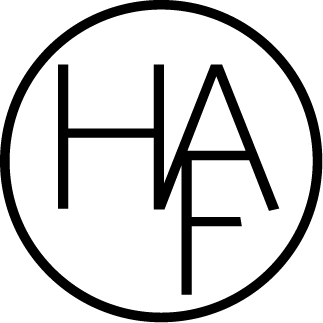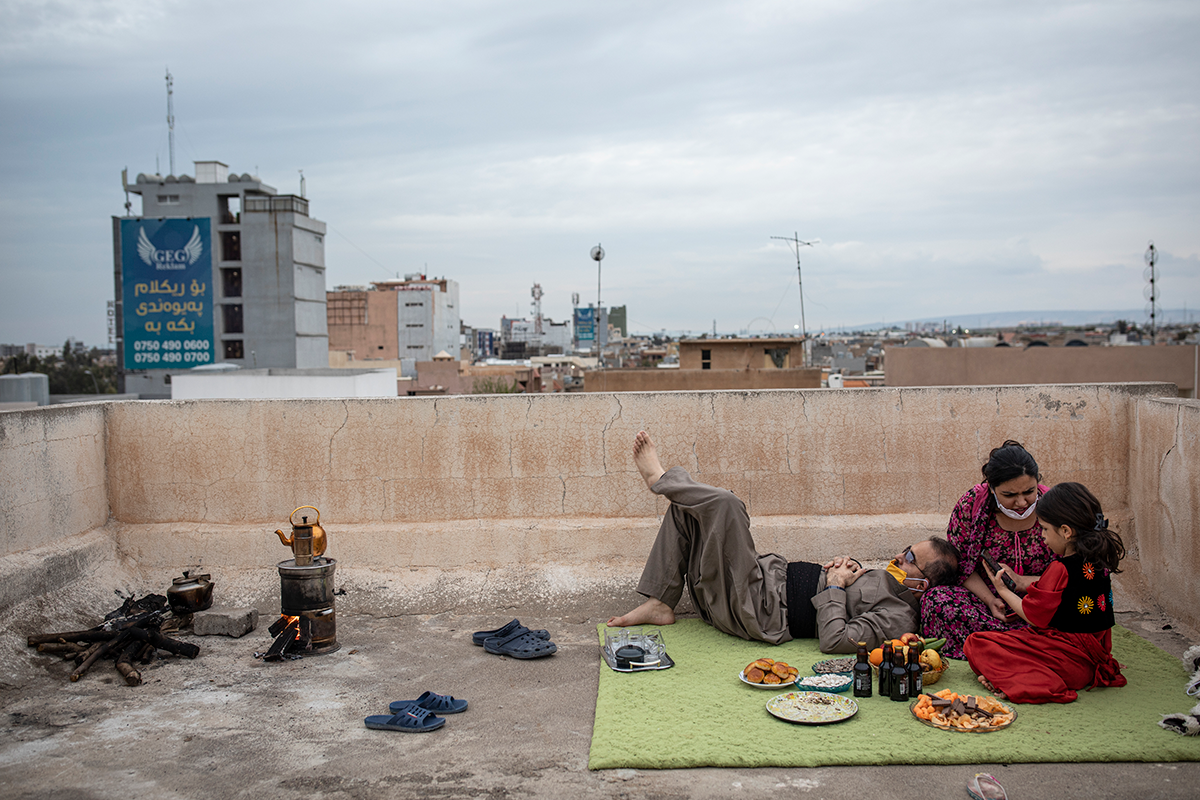Weshyar, His Family, Open Wounds © Younes Mohammad
Kurdish photographer Younes Mohammad’s photographs of PeShmerga fighters and refugees convey the barbarity of war while honoring refugee experiences from an insider’s perspective.
Images of refugees are common in worldwide media. Scenes of displaced and traumatized people often serve as sanitized substitutes for footage of the natural or man-made catastrophes that violently interrupt life’s familiar rhythms.
Younes Mohammad knows the precariousness of refugee life first hand. From 1974 to 1998, the Kurdish Iraqi sheltered across the border in Iran. While he was relatively protected from Saddam Hussein’s genocidal purge of ethnic Kurds, Mohammad was estranged from deep cultural and familial roots in his home country. In 2011, he left his job to pursue photography full time.
Open Wounds recounts Mohammad’s work with Peshmerga fighters - those who face death - in the months and years after ISIL rampaged across Iraq and Syria. Comprising harrowing portraits of wounded warriors and scenes of life scratched out from devastation, the series also conveys the photographer’s all too keen understanding of uncertainty amidst conflict.
Mohammad describes working with Peshmerga warriors and their families, why it is crucial for refugees to be seen and their humanity sustained, and what kept him busy during quarantine.
Roula Seikaly in conversation with Younes Mohammad
In The Name of Religion © Younes Mohammad
Roula Seikaly: Who are the Peshmerga, and why are you interested in photographing them?
Younes Mohammad: Peshmerga, or "those who face death," were regular people during the last century, who, without any military training, decided to fight against oppression and face the enemy as volunteers. They have lived, fought, and stayed in the Kurdistan mountains far from their own families, seeking Kurdish rights and safety. Now, these forces have some military training and salaries and are organized by the Ministry of Peshmerga in Kurdistan. They are responsible for security and military activities in the Kurdistan Region and are in fact the Kurdish branch of the Iraqi Armed Forces.
As I said, they are not career soldiers, they are regular people. The new generation of Peshmerga have some military training but it is still not enough and most are not prepared for new kinds of wars like the one against ISIL and terrorism. They are very brave, but their equipment is often outdated. There are a lot of martyrs and wounded because of this. They deserve more attention right now, especially after the war left many people wounded and our government is not able to cover all their treatment costs. In many ways, it feels like the world has forgotten about them.
Hawar, Open Wounds. © Younes Mohammad
Seikaly: Could you describe working with your sitters? How do you approach them? Where do you photograph them?
Mohammad: When I started to find them, I found out that each lived in a very different location. I would travel for hours to various cities and villages because it was usually too difficult for them to travel away from their homes because of their physical conditions, as many are amputees. I decided I had to see them in their own homes.
When I met each of them, I would explain the project so there would be little or no doubt about my motivations. Some would accept the aim of the project easily, and others were understandably more hesitant. I would talk to the latter as often as I could to build an understanding between us, because I felt it was important to share their stories on their own terms, and eventually they would accept as well. I found that bound of trust both humbling and empowering.
Bahman, Hind, Open Wounds. © Younes Mohammad
Seikaly: Could you address the aesthetic choices - black backdrop, isolated figure - that are central to this project? Why is this presentation important?
Mohammad: At first, I was interviewing each of my subjects to know their stories and then documenting their daily lives to understand and capture how they navigate their personal realities. I found, however, that these photographs resulted in taking the viewer’s eye away from what I was really looking to confront head-on. I wanted to show their pain directly with nothing to distract the viewer.
This is why I decided to use a backdrop. I chose a black backdrop specifically because it was the same color of the infamous flag of ISIL, the enemy that had wounded these very people who were now sharing their intimate and sad stories with me. This black backdrop informed an aesthetic based on simplicity that I was looking to achieve. I also decided to use the natural light that existed in their homes, which made the photographs more natural and relatable.
In some photos, I did ask them to wear traditional Kurdish clothing, which is full of color, in order to bring more beauty to the photograph. Above all, I would wait to capture real feelings, no matter how long it took.
Brahim. Open Wounds. © Younes Mohammad
Seikaly: Why is it important to photograph these subjects
Mohammad: This project is the result of war. I want to speak through these photographs, even if it is discomforting, because it is imperative we talk about how horrific and painful war is and how deep its consequences run. War is the end of beauty, it’s the end of humanity. We all have to try our best to prevent conflict. Life is beautiful and we must find a way to live together. War should not be the solution for world differences. It has proven itself not to be. This project is a story about the search for peace.
Dawoud and Mustafa, Open Wounds. © Younes Mohammad
Seikaly: Does your refugee experience affect your photographic practice and interests?
Mohammad: I would say, yes, because now the world has given me the opportunity as a photographer to capture moments that were once the reason for my own displacement. There are so many other children and families who are now refugees as I once was, and I have to try my best to document their lives and work to prevent this from happening in the future.
© Younes Mohammad. From the series Lockdown Diary
© Younes Mohammad. From the series Lockdown Diary
Seikaly: Could you describe your latest project, Lockdown Diary, and why you started it?
Mohammad: After quarantine started because of the coronavirus, I felt like I had to stand beside essential workers like medical staff and urban service workers. I couldn't remain inside forever. This reality drove me outside. The empty streets and alleyways frightened me so much, it was like a dream. Where are all the people and what are they doing? For the first time, I experienced a kind of fear that I had only seen in movies, and I had never thought that I would live in such a movie.
My other concern was mainly the infrastructure of a country like mine with a weak healthcare system. I feared, if the coronavirus reached the Kurds, the number of victims would be very high. I was afraid it could kill more Kurdish people than war, chemical weapons, genocide, and Saddam had all managed to do. I had to escape the fear of these empty streets and find out where people were, what they were doing, and how they were holding up. I wanted to document life under quarantine and how people could connect during the pandemic.
I spent each day during this period with a family and tried to record some of the unforgettable moments. I had photographed war before, and although every moment in war is full of distress, I have to admit that this time I was more scared than during any other project.








